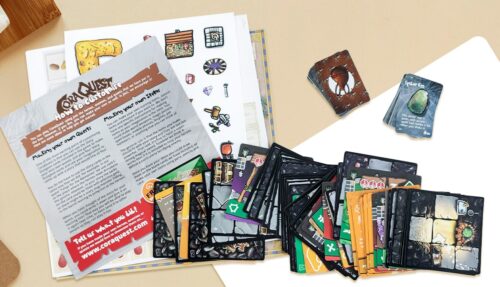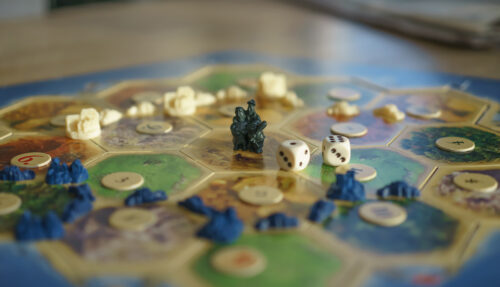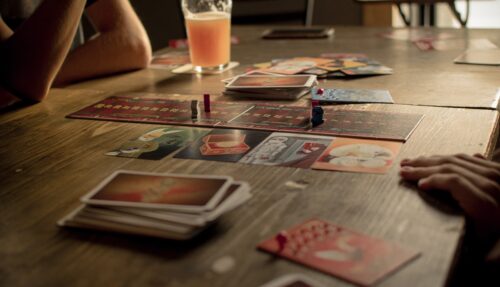We give you a comprehensive glossary of board game mechanics and an explanation of what each one is
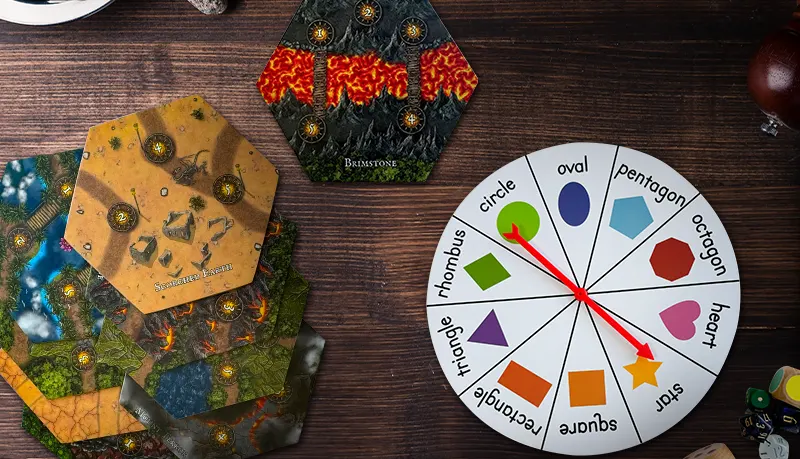
Board games have been a beloved form of entertainment for centuries, offering players a chance to engage in strategic thinking, social interaction, and immersive storytelling. But for newcomers to the world of board game design, the sheer variety of games and the jargon associated with them can be overwhelming. That’s where understanding board game mechanics comes in, as these are the “fundamental units” of any game design.
In this comprehensive guide, our aim is to offer you a glossary of the core mechanics that drive board games, providing you with a solid foundation to navigate the diverse landscape of tabletop gaming. While you’ll find several lists that delineate many more mechanics than we’ve listed here, we’re trying to make this more helpful and simple, so we’ve grouped what you might call “sub-mechanics” together under catch-all terms. So, for example, all kinds of disruptive mechanics—such as stealing, resource appropriation, combat, movement blocking, and so on—we’ve grouped together under the title of “Take That” mechanics, and so on.
Introduction to board game mechanics
Board game mechanics are the underlying systems that dictate how players interact with a game and make decisions. These mechanics provide structure, define the rules, and create the gameplay experience. Understanding these mechanics is essential for both players and game designers, as they shape the strategic depth, player interactions, and overall enjoyment of a game.
Board game mechanics can range from simple to complex, with each mechanic offering a unique way to engage players. Some mechanics focus on resource management, while others emphasize strategic planning or social interaction. By combining different mechanics, as a game designer, you can create a vast array of experiences, making sure that your game satisfies your prospective ‘audience’.
In the following sections, we’ll explore the most popular board game mechanics categories in detail, providing examples of games that exemplify each mechanic and diving into the nuances of their gameplay. Whether you’re a seasoned game designer looking to expand or deepen your knowledge or a newbie seeking guidance, this post will equip you with the tools to navigate the exciting world of board game mechanics. So, let’s jump straight in.
Worker placement
Worker placement is a popular mechanic in which players strategically place their game pieces, often representing “workers” or “agents”, onto specific locations on the game board. Each location offers different actions or resources that players can gain by placing their workers there. This mechanic requires careful planning and decision-making, as players must choose which actions to prioritize and when to take them.
One example of a game that utilizes the worker placement mechanic is Lords of Waterdeep. In this game, players take on the roles of secret rulers of the city of Waterdeep and send their agents to various locations to complete quests, gather resources, and gain influence. Each location has a limited number of spaces available, and once a player places their agent, other players are prohibited from using that location until the agent is removed. This creates a dynamic and competitive gameplay experience as players vie for the most advantageous actions.
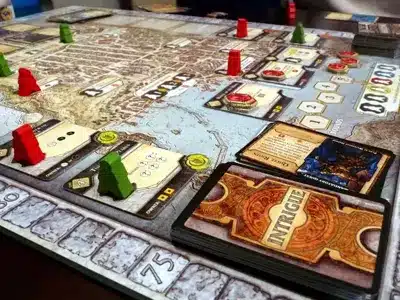
Worker placement mechanics offer a variety of strategic choices, as players must consider their short-term goals, long-term plans, and potential blocking strategies. The mechanic encourages players to anticipate their opponents’ moves, adapt their strategies on the fly, and optimize their actions to achieve victory. It is a versatile mechanic that can be found in a wide range of games, from euro-style strategy games to thematic adventure games.
Dice rolling
Dice rolling is a classic board game mechanic that adds an element of randomness and uncertainty to gameplay. Players roll dice to obtain certain values or symbols, which determine the outcome of their actions, such as attacking an opponent, moving their character, or resolving events. Dice rolling can add excitement and tension to a game, as players must rely on luck to succeed.
One example of a game that heavily incorporates dice rolling is Age of War. In this game, players take on the roles of powerful Daimyo, competing to unite the war-torn feudal lands of Japan. Each turn, players roll dice to attack and conquer castles, strategically choosing which territories to target. The outcome of these battles is determined by the dice roll, with higher values resulting in successful conquests. The game combines dice rolling with strategic decision-making, as players must choose which battles to prioritize and when to press their luck.
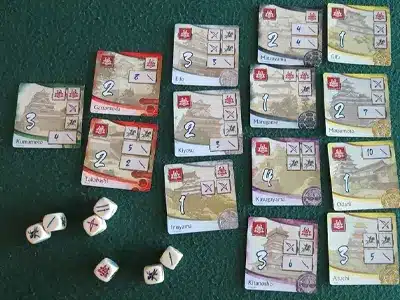
Dice rolling mechanics can vary in complexity and impact on gameplay. Some games may use dice as a simple resolution mechanic, while others may involve intricate dice manipulation and mitigation techniques. The element of chance introduced by dice rolling can create memorable moments of triumph or disappointment, making it a staple in many board games.
Take that
The “Take That” mechanic is all about direct player interaction and confrontation. In games that utilize this mechanic, players have the ability to directly impact and disrupt their opponents’ progress by stealing resources, blocking their actions, or reducing their points. This mechanic adds a layer of competition and strategic decision-making, as players must carefully choose when and how to target their opponents.
King of Tokyo is a prime example of a game that embraces the “Take That” mechanic. In this fast-paced, dice-rolling game, players take on the roles of giant monsters vying for control of the city of Tokyo. Players can attack each other, gaining points for successful hits and forcing their opponents out of Tokyo. This mechanic encourages players to strategically choose their targets, weighing the benefits of attacking others versus maintaining control of Tokyo.
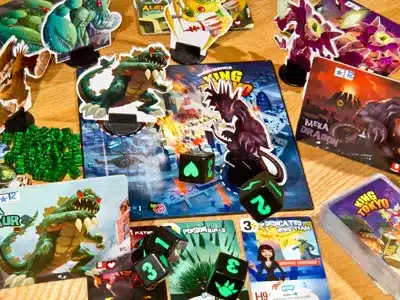
The “Take That” mechanic can create dynamic and engaging gameplay, as players must adapt their strategies based on their opponents’ actions. It adds an element of player interaction, negotiation, and even diplomacy, as alliances may form and break throughout the course of the game. This mechanic is particularly popular in competitive and interactive games, providing a satisfying level of player engagement.
Set collection
Set collection is a mechanic that involves players collecting and organizing a specific set of cards, tiles, or tokens to achieve certain goals or score points. In games that utilize this mechanic, players must strategically acquire and manage their collection, often considering the synergies between different elements to maximize their scoring potential.
Sushi Go! is a delightful game that exemplifies the set collection mechanic. In this fast-paced card game, players aim to create the most appealing sushi combinations by drafting cards from a central deck. Each card represents a type of sushi, and players must carefully select cards that complement each other to score the most points. For example, collecting a set of sashimi cards or completing a set of dumplings can yield significant rewards.

Set collection mechanics offer players the opportunity to strategize and plan ahead, weighing the trade-offs between short-term gains and long-term goals. Players must consider the availability of certain elements, the value of each set, and the potential competition for specific cards or tokens. Set collection games can range from light and casual experiences to complex and strategic endeavors, catering to a wide range of player preferences.
Card drafting
Card drafting is a mechanic in which players are presented with a selection of cards and must choose one to add to their hand or play area. The remaining cards are then passed to the next player, and the process continues until all the cards have been selected. This mechanic requires players to carefully evaluate their options, anticipate the choices of other players, and adapt their strategies accordingly.
One prominent example of a game that employs the card drafting mechanic is Terraforming Mars. In this highly strategic game, players take on the roles of corporations tasked with making Mars habitable for humanity. Each round, players are presented with a set of cards representing various projects, technologies, and resources. They must carefully choose which cards to add to their hand, considering their long-term goals, available resources, and potential synergies.
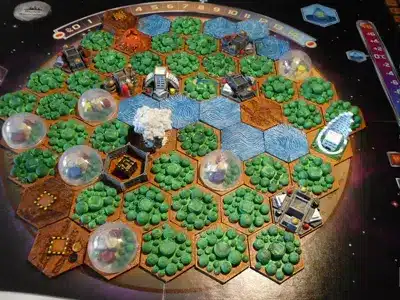
Card drafting mechanics offer a dynamic and interactive gameplay experience, as players must pay attention to the choices made by their opponents. It encourages strategic thinking, forward planning, and adaptability, as players must make the most of the cards available to them. Card drafting can be found in a wide range of games, from deck-building games to strategic card-driven experiences.
Variable player powers
Variable player powers are a mechanic that adds asymmetry and uniqueness to the gameplay experience. In games that utilize this mechanic, each player is assigned a specific character, faction, or role, each with its own special abilities, strengths, and weaknesses. This mechanic encourages players to explore different strategies and playstyles, as each player approaches the game from a distinct perspective.
Pandemic is a cooperative game that exemplifies the variable player powers mechanic. In this game, players work together to combat the outbreak of diseases around the world. Each player takes on a unique role, such as a scientist or a medic, with specialized abilities that can aid the team in their mission. The varying powers of each character create a sense of teamwork and cooperation, as players must utilize their individual strengths to overcome challenges.

Variable player powers mechanics offer a high degree of replayability and strategic depth, as players must adapt their strategies based on their assigned roles and the interactions with other players’ abilities. This mechanic encourages exploration, experimentation, and collaborative problem-solving, making each playthrough a fresh and engaging experience.
Area control
Area control is a mechanic in which players compete to gain control over specific regions or territories on the game board. Players place their pieces, tokens, or markers on the board to establish dominance, often earning points or other rewards for controlling the majority or specific combinations of regions.
Small World is a popular game that incorporates the area control mechanic. In this fantasy-themed game, players lead different races and special powers in a quest for dominance. Players expand their empires, conquer territories, and vie for control over the game board. The game combines area control with strategic decision-making, as players must choose which races and powers to utilize at the right time.
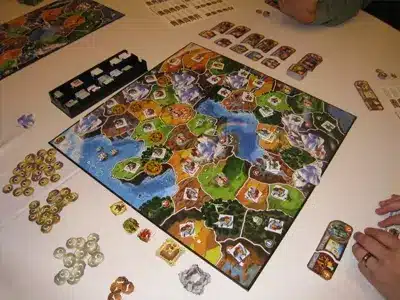
Area control mechanics create a dynamic and competitive gameplay experience, as players must balance their offensive and defensive strategies, anticipate their opponents’ moves, and adapt to changing circumstances. It encourages tactical thinking, negotiation, and strategic planning, making each game session a thrilling battle for supremacy.
Action programming
Action programming is a mechanic that requires players to plan and sequence their actions in advance, usually by choosing from a set of available actions or abilities. Players determine their actions for future turns, often without knowing how their opponents will act. This mechanic adds an element of strategy and foresight, as players must anticipate their opponents’ moves and plan accordingly.
Colt Express is a game that showcases the action programming mechanic. In this Western-themed game, players take on the roles of bandits attempting to rob a moving train. Each turn, players secretly program a series of actions, such as moving, shooting, or looting, by playing cards from their hand. The actions are then executed in a predetermined order, with players hoping their plans align with the unfolding events.
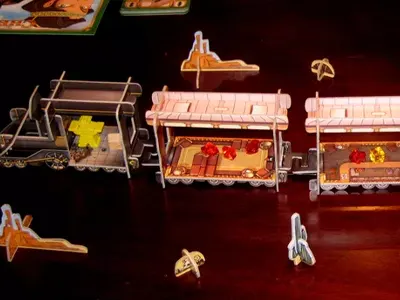
Action programming mechanics require players to think several steps ahead, weigh the risks and rewards of each action, and adapt their plans based on the actions of their opponents. It adds a layer of unpredictability and excitement to the gameplay, as players must react and adjust their strategies on the fly.
Storytelling
Storytelling is a mechanic that emphasizes the creation of narratives and immersive experiences through gameplay. Games that utilize this mechanic often feature thematic elements, rich lore, and branching paths that allow players to shape the unfolding story. Players make decisions, resolve events, and engage in role-playing elements, creating a compelling narrative arc.
T.I.M.E. Stories is an example of a game that fully embraces the storytelling mechanic. In this cooperative game, players become time-traveling agents tasked with solving mysteries and preventing temporal anomalies. Each scenario presents a unique story, with players making choices, interacting with characters, and unraveling the plot as they progress. The game encourages players to immerse themselves in the narrative, creating a truly interactive storytelling experience.
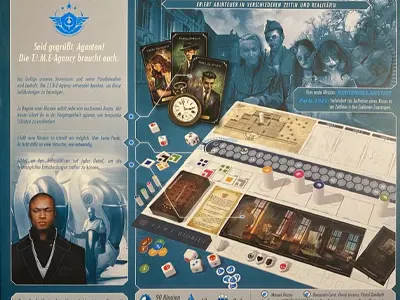
Storytelling mechanics offer players a sense of agency and investment in the game world, as their decisions directly impact the narrative outcome. It encourages creativity, role-playing, and collaborative problem-solving, allowing players to become active participants in a captivating story.
Push your luck
The “Push Your Luck” mechanic revolves around players making decisions with uncertain outcomes and weighing the risks and rewards of their choices. Players have the option to continue taking actions or pursuing opportunities for greater gains, but doing so increases the chances of failure or loss. This mechanic adds tension, excitement, and tough decision-making to gameplay.
Port Royal is a game that exemplifies the push your luck mechanic. In this card game, players take on the roles of merchants in the bustling port of Port Royal. Each turn, players can draw additional cards from the deck, with the goal of amassing valuable goods and earning points. However, drawing more cards increases the risk of encountering dangerous events or exceeding their capacity, resulting in potential penalties.
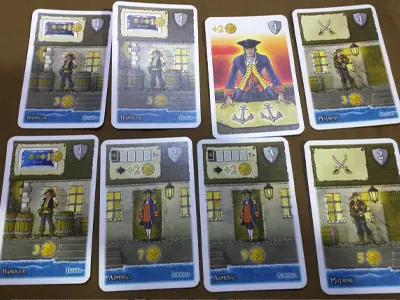
Push your luck mechanics require players to assess probabilities, evaluate potential rewards, and make calculated gambles. It introduces a thrilling element of chance and uncertainty, as players must decide when to push their luck and when to play it safe.
Tile placement
Tile placement is a mechanic that involves players placing individual tiles onto the game board to create an evolving landscape or game state. Each tile contains specific features, such as roads, buildings, or terrain elements, that must be strategically placed to maximize their impact on gameplay. This mechanic allows players to shape the game world and influence the course of play.
Carcassonne is a classic game that utilizes the tile placement mechanic. In this medieval-themed game, players take turns drawing and placing tiles to build cities, roads, and farms. Each tile must be placed adjacent to existing tiles, with the goal of creating completed features and scoring points. The placement of tiles determines the connectivity of different elements, the control of regions, and the overall strategic opportunities.
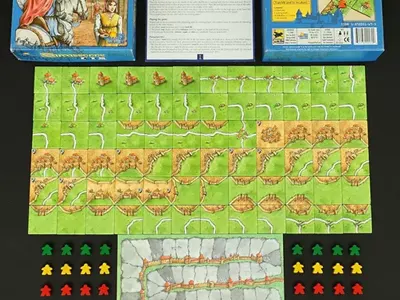
Tile placement mechanics encourage spatial reasoning, strategic planning, and adaptability, as players must assess the available options and envision the future state of the game board. It offers dynamic gameplay, as the landscape evolves with each tile placement, creating a unique and visually appealing game experience.
Cooperative play
Cooperative play is a mechanic in which players work together towards a common goal, often facing off against the game itself or a common adversary. Players pool their resources, share information, and combine their abilities to overcome challenges and achieve victory. This mechanic fosters teamwork, communication, and strategic coordination.
Eldritch Horror is a cooperative game that embodies the essence of cooperative play. In this Lovecraftian-themed adventure game, players take on the roles of investigators battling ancient evils and unraveling cosmic mysteries. Each player contributes their unique skills and abilities to overcome challenges, gather clues, and ultimately save the world from impending doom. The game emphasizes collaboration, as players must coordinate their actions, share information, and make collective decisions to succeed.
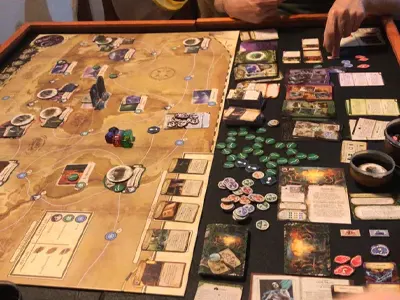
Cooperative play mechanics offer a shared gaming experience, fostering camaraderie, and a sense of shared achievement. It encourages players to communicate, strategize, and adapt to changing circumstances, making it an ideal choice for those who enjoy teamwork and collaborative problem-solving.
Trading
Trading is a mechanic that facilitates the exchange of goods, resources, or other in-game assets between players. It encourages negotiation, deal-making, and strategic alliances, as players seek to maximize their own gains while meeting the needs of their opponents. This mechanic adds a social element to gameplay, fostering player interaction and creating dynamic and unpredictable situations.
Catan is a game renowned for its trading mechanic. In this classic resource management game, players take on the roles of settlers on the island of Catan, seeking to build settlements, cities, and roads. Players must trade resources with each other to acquire the necessary materials for their construction. Negotiation and deal-making are essential to secure favorable trades and establish mutually beneficial alliances.
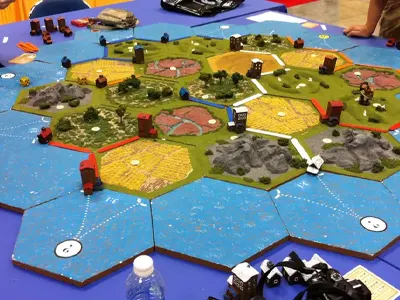
Trading mechanics require players to assess the value of different resources, negotiate fair deals, and strategically leverage their bargaining power. It introduces a social dynamic to gameplay, as players must navigate alliances, rivalries, and shifting power dynamics.
Hand management
Hand management is a mechanic that involves players carefully managing the cards or resources in their hand to maximize their effectiveness and achieve their objectives. Players must make choices about when to play or retain cards, weighing short-term benefits against long-term planning. This mechanic requires strategic thinking, adaptability, and the ability to anticipate future challenges.
One example of a game that incorporates the hand management mechanic is Race for the Galaxy. In this space-themed card game, players strive to build the most successful galactic civilization. Each player starts with a hand of cards representing different worlds, developments, and resources. Players must strategically play cards from their hand, considering their costs, benefits, and synergies, to establish a thriving empire.
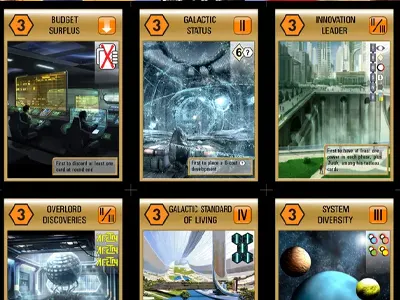
Hand management mechanics offer players a sense of agency and control over their gameplay experience. It encourages strategic decision-making, resource optimization, and adaptability to changing circumstances. Players must carefully consider the timing and sequencing of their actions, ensuring they make the most of their available resources.
Board game mechanics as building blocks of game design
Board game mechanics are the building blocks that shape the gameplay experience, offering a diverse range of strategic choices, player interactions, and immersive narratives. From worker placement to storytelling, each mechanic adds a unique flavor to the games we love.
By understanding these mechanics, board game designers can navigate the vast landscape of board gaming and discover the types of games that suit their preferences and will best support the theme and dynamics of their game concept. Whether you enjoy strategic planning, social interaction, or immersive storytelling, there is a board game mechanic, or combination of mechanics, that will serve your needs.
Let's talk!
Exploring the intricacies of board game mechanics has likely sparked your interest in creating your own board game. If that’s the case, you’re embarking on a captivating and potentially fulfilling creative journey. At QinPrinting, our passion for board games aligns with yours, and that’s precisely why we’ve invested significantly in our board game creation service.
Our commitment extends beyond mere board printing—although we excel in that aspect too! Collaborating with you, we can bring your vision to life by crafting a prototype, designing and printing your rule book, and manufacturing bespoke components for your game, including tiles, cards, dice, figures, miniatures, and more. To complete the entire package, we provide a personalized game box. In essence, we’re more than just a printing service; we offer comprehensive board game manufacturing.
Reach out today for a commitment-free quote on your project. Alternatively, share your concept with us, and one of our seasoned experts will gladly elucidate how we can contribute to realizing your dream of a stunning, one-of-a-kind, custom board game. We eagerly anticipate supporting your enthusiasm, ready to leverage our expertise, knowledge, and cutting-edge technology to bring your vision to fruition. Let’s talk!






